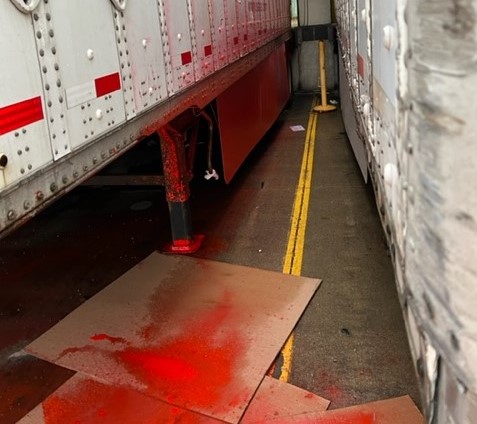
When one of the top freight-carrying companies in America, with annual revenues over $2 billion, suffered a paint spill at one of its Midwest terminals, Hazchem Environmental was called.
The date was March 30, 2022, and the time of the call was 8:35 a.m.
HazChem also handles some of the wastewater treatment service this carrier needs so HazChem Co-Owner Alan Shapiro wasn’t surprised to get the March 30 emergency call.
“This freight-carrying company knew we could handle this spill and we’d get on it immediately,” Shapiro said.
The affected Midwest terminal was 35 miles away from HazChem’s home base (Addison, IL).
“Their dock supervisor had told us it was a 5-gallon spill,” Shapiro said. “He said it was pretty well spread out inside a trailer, but that the spill in total was about 5 gallons.”
For a spill thought to be relatively small, HazChem sent out its usual force, a three-man crew.
“But once our crew arrived onsite and inspected the entire spill, the dock supervisor apologized to us because the spill was closer to 150 gallons,” Shapiro explained.

“There was no reason to apologize to us. The dock supervisor wasn’t aware that the spill wasn’t just on a single trailer, it had leaked all over the parking lot outside, had affected a second trailer, and had actually spread about a half-mile in duration on the road that leads in and out of this terminal.
“We just had to adjust our game plan.”
At the spill site, the HazChem crew manager had taken about 30 photos and sent them back to the operations department in Addison. It was heavily raining and the day’s forecast called for continuous downpours.
“We could tell a pressure washer, drum vacuum and Bobcat were needed to handle this cleanup,” Shapiro explained.
While waiting for the additional equipment to arrive, the onsite crew of HazChem spread oil dry around, creating several berms, doing what was necessary to prevent the spill from spreading. The crew also was able to begin cleaning the inside of the trailer.
Once the additional equipment arrived, the crew was able to clean up the outside areas. The power washer proved effective at cleaning the two trailers which had paint on them.

The drum vacuum was efficiently sucking up puddles of paint and water. The crew members were using squeegees to gather the water puddles filled with paint, speeding up the whole cleanup process.
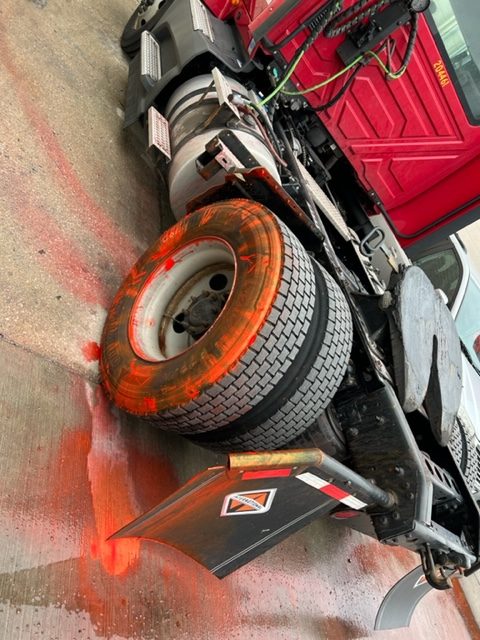
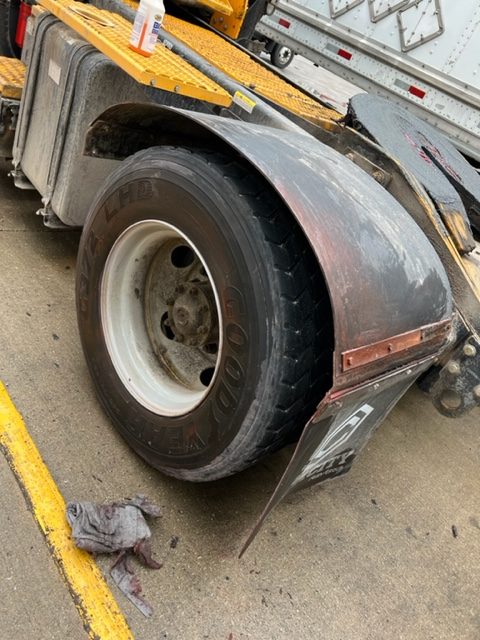
There had been a tractor with tough-to-remove paint on its back tire, mud flap and fuel tank. The crew used universal pads to handle this part of the cleanup, and that proved successful.
Once the paint-infested road could be safely worked on, the crew employed the Bobcat.

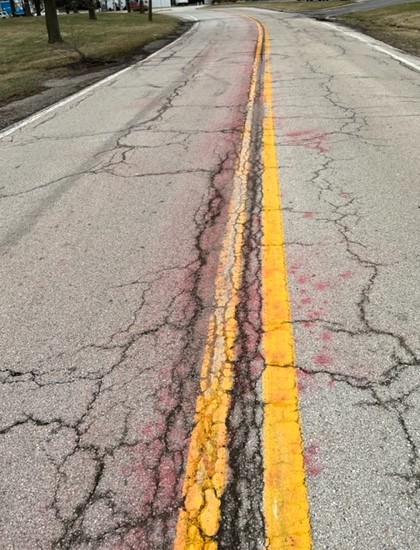
Ten bags of oil dry can fit into the bucket of a HazChem Bobcat and that is equivalent to 500 pounds.
The Bobcat spread the oil dry down onto the half-mile paint-covered road, work it in, and then deposit the worked-in oil dry into 55-gallon open-top-steel drums.
“It’s a very effective machine and our crew used it wisely and it worked extremely well,” Shapiro said.
Ultimately, the crew ended up with 15 drums of waste for this entire cleanup. By 1:15 p.m., after just under four hours of work, the terminal was clean of the spilled paint.

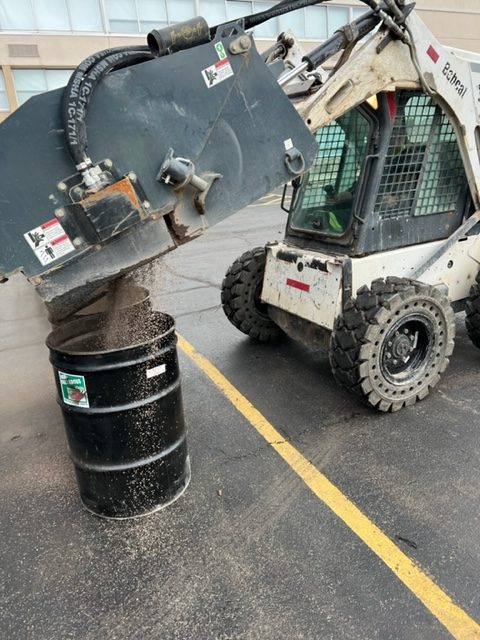
“Our crew did an excellent job,” Shapiro said. “On occasion, spills can be worse than originally reported. It happens. The key is to stay poised, reassess the situation and then take effective action. Our client was happy with our cleanup work —and that’s the key part of the emergency-response process.”
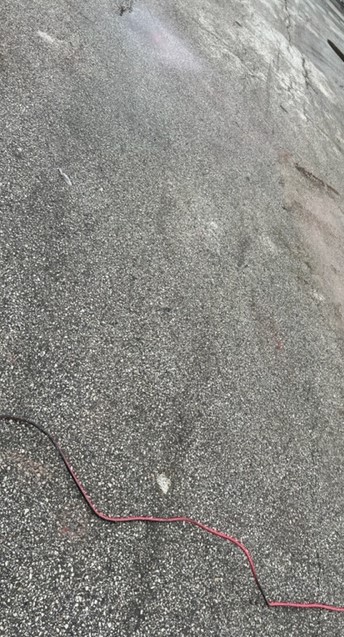

Recent Comments